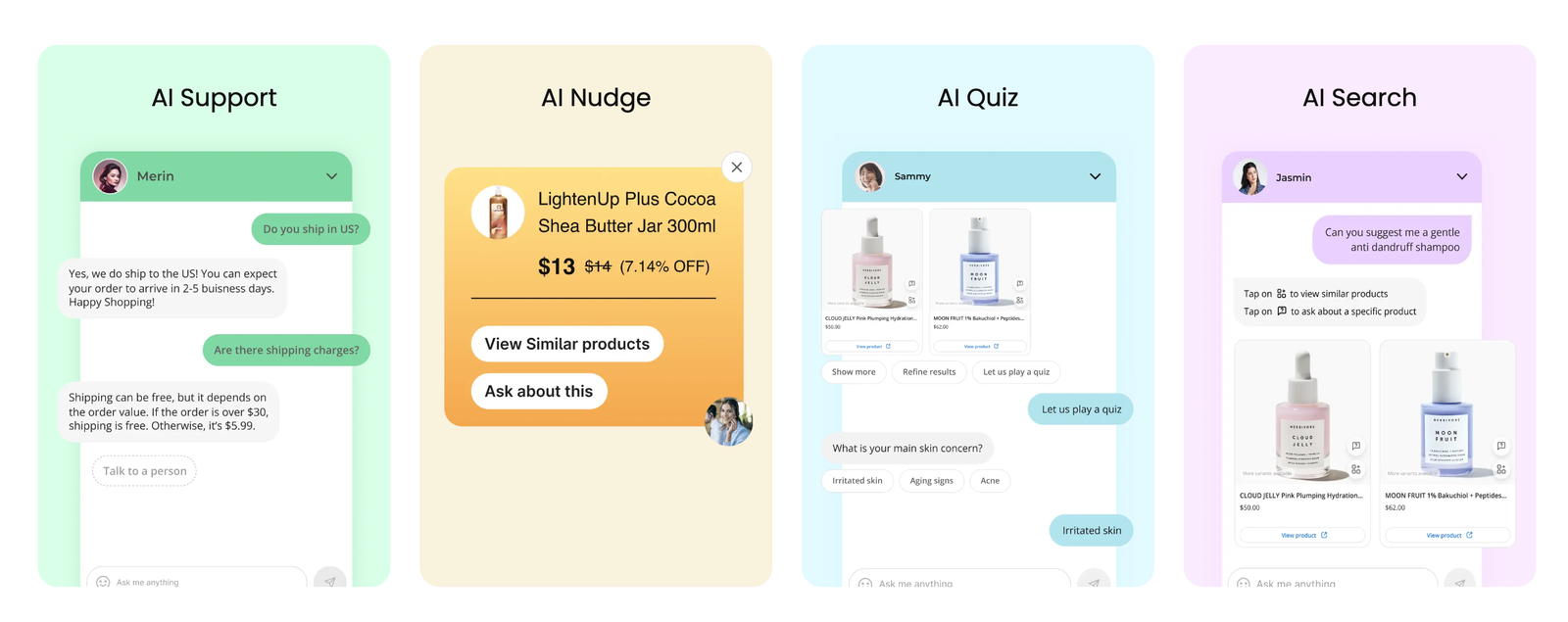The Essentials of Customer-Centric Selling: How to Focus on Your Buyers

In an era where consumers have more choices than ever, the approach to selling has shifted significantly. Traditional sales methods are making way for strategies that place the buyer at the heart of every transaction. This transition to customer-centric selling is not just a trend but a necessity. Studies indicate that companies focusing on customer needs enjoy 60% higher profits compared to those that don't. This blog explores this pivotal strategy, aiming to equip you with the knowledge to understand your customers deeply and tailor your offerings to meet their needs, thus fostering loyalty and driving success.
What is Customer Centric Selling?

At its core, customer-centric selling revolves around the principle of placing the customer's needs, interests, and preferences at the forefront of the sales process. This approach goes beyond simply pushing products or services; it involves a deep understanding of the customer's challenges, goals, and desires, aiming to provide solutions that genuinely add value to their lives. In an age where consumers are bombarded with choices, adopting a customer-centric perspective is crucial for businesses seeking to stand out and build lasting relationships. This blog delves into the essence of customer-centric selling, offering insights into how this strategy not only enhances customer satisfaction but also drives sustainable growth and loyalty in today's competitive marketplace.
What Does it Mean to Be Customer-Centric?
Customer-centric selling methodology means prioritizing the needs, experiences, and satisfaction of your customers in every decision and action your business takes. It's a strategic orientation that places the customer at the heart of business operations, from product development to service delivery, and beyond. This approach recognizes that the value of products or services is defined not just by their quality or price, but by how well they meet the specific needs and expectations of customers.
A customer-centric business actively listens to its customers, gathers feedback, and uses these insights to improve and innovate. It's about building relationships based on trust and respect, ensuring that interactions are personalized and meaningful. This ethos extends across the entire company culture, requiring a commitment from every team member to consider the customer impact in their roles.
In practice, being customer-centric can lead to higher customer satisfaction, loyalty, and advocacy, as customers feel valued and understood. Over time, this not only attracts new customers but also strengthens the bond with existing ones, creating a solid foundation for sustained business growth and success.
How to Build a Customer-Centric Sales Process?
Building a customer-centric sales process involves reorienting your strategy to focus on the customer's needs and preferences at every step. Here’s how to develop this approach effectively:
- Understand Your Customer: Begin with thorough research into your target audience's challenges, desires, and behavior patterns. Use surveys, feedback, and interactions to gather insights.
- Tailor Your Communication: Customize your communication based on the customer's specific situation. This means adapting your language, tone, and messaging to resonate with their needs and preferences.
- Provide Value at Every Stage: Ensure that each interaction offers value to the customer, whether it's informative content, helpful advice, or a listening ear. The goal is to build a relationship, not just make a sale.
- Feedback Loop: Implement a system for collecting and analyzing customer feedback regularly. Use this feedback to refine your sales process, product offerings, and customer service practices.
- Empower Your Team: Equip your sales team with the training and tools they need to adopt a customer-centric approach. Encourage them to focus on solving problems and building relationships rather than just closing deals.
- Leverage Technology: Utilize CRM and other technologies to personalize interactions and streamline the sales process, making it easier for customers to engage with your brand.
- Measure Success: Define metrics that reflect customer satisfaction and loyalty, not just sales numbers. Monitor these metrics to gauge the effectiveness of your customer-centric approach and identify areas for improvement.
Customer Centric Selling Stages
Adopting a customer-centric approach in selling involves structuring your sales process around the customer's buying journey, ensuring their needs and experiences are prioritized at each stage. Here are the key stages of customer-centric selling, detailed without the jargon:
Research and Understanding
Begin with deep research to understand your potential customer’s industry, challenges, and goals.
Utilize data analytics, customer feedback, and market research to build a comprehensive profile of your target customers.
First Contact and Relationship Building
Initial interactions should be customer focused selling on establishing trust and understanding, not pushing a sale.
Engage in meaningful conversations to learn about the customer's specific needs and how your product or service can address them.
Needs Assessment
Conduct a detailed assessment of the customer’s needs through thoughtful questioning and active listening.
Tailor this stage to the individual customer, demonstrating genuine interest in finding the best solution for their problems.
Solution Alignment
Present your product or service as a solution, clearly linking its features and benefits to the customer’s identified needs.
Highlight how your offering can help achieve their goals or solve their problems in a practical and relevant manner.
Value Proposition
Communicate the unique value your solution offers, emphasizing how it stands out from competitors in meeting the customer's needs.
Use case studies, testimonials, or data points to reinforce the value proposition.
Negotiation and Closure
Approach negotiations with a win-win mindset, aiming to find terms that benefit both your customer and your company.
Be flexible and open to adjustments that enhance the deal's value for the customer.
Post-Sale Support and Follow-Up
After closing the sale, continue to engage with the customer to ensure they are satisfied and fully supported.
Offer resources, training, or assistance to facilitate successful product implementation and usage.
Feedback and Continuous Engagement
Solicit feedback to understand the customer's satisfaction level and any ongoing needs.
Use this feedback to improve your offerings and maintain a relationship, aiming for repeat business and referrals.
Customer Centric Selling Examples
Customer-centric selling approach focuses on understanding and meeting the unique needs of customers, often leading to enhanced satisfaction and loyalty. Here are practical examples that illustrate this approach:
- A Technology Firm Personalizes Its Demonstrations: Instead of generic product demos, the company tailors its presentations to address the specific challenges and goals of each prospective client. By highlighting relevant features and benefits, they demonstrate a deep understanding of the customer's business needs.
- Retail Chain Adopts Flexible Return Policies: Recognizing that customer satisfaction extends beyond the purchase, a retail store offers hassle-free returns and exchanges. This policy, designed around customer convenience, builds trust and encourages repeat business.
- Financial Services Provider Offers Customized Solutions: Instead of one-size-fits-all financial advice, advisors take the time to understand each client's financial situation, goals, and risk tolerance. They craft personalized investment strategies that align with the client's long-term objectives.
- Software Company Implements Customer Feedback Loops: This company regularly collects user feedback on its products and uses this information to guide future updates and developments. By involving customers in the product evolution process, they ensure that new features and improvements address real user needs.
How to do Customer Centric Selling with AI?

Integrating AI into customer-centric selling, particularly through platforms like Manifest AI, offers a transformative approach to understanding and engaging with customers. Here’s a structured way to implement this:
- Deep Customer Insights: Utilize Manifest AI to analyze customer data, identifying patterns and preferences. This analysis helps in crafting personalized interactions and solutions tailored to each customer's unique needs.
- Automated Personalization: Leverage AI to automate and personalize communication across various channels. Manifest AI can ensure that every message, product recommendations, or offer feels relevant and timely to the recipient, enhancing the customer experience.
- Predictive Analytics: Employ Manifest AI’s predictive capabilities to anticipate customer needs and preferences. This foresight allows for proactive engagement, offering solutions or products before the customer even realizes they need them.
- Feedback Loop: Use AI to gather and analyze feedback efficiently, providing actionable insights that can refine and improve the sales strategy continuously.
- Efficiency and Scale: Manifest AI enables scaling personalized customer interactions without compromising the quality or individuality of the service, maintaining a high level of customer satisfaction while efficiently managing resources.
Conclusion
Customer oriented selling shifts the focus from merely closing deals to genuinely understanding and meeting the needs of buyers. This approach emphasizes the importance of building relationships, tailoring solutions, and ensuring satisfaction at every touchpoint. By prioritizing the customer's perspective, businesses can foster loyalty, enhance reputation, and drive sustainable growth. Embracing these essentials allows companies to not only meet but exceed expectations, creating a win-win scenario for both the buyer and the seller.

.png)
